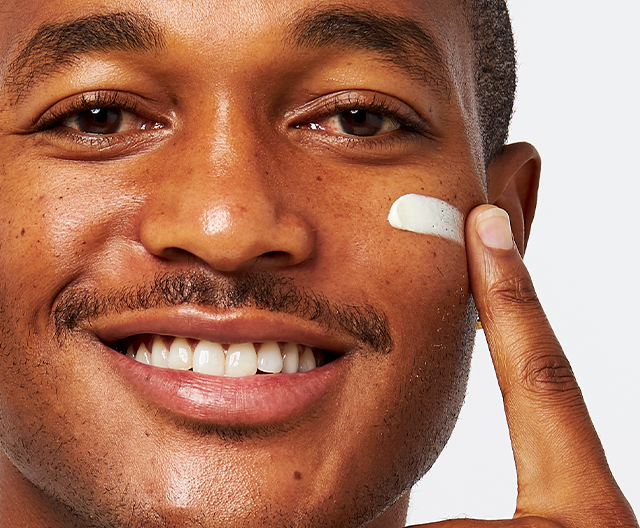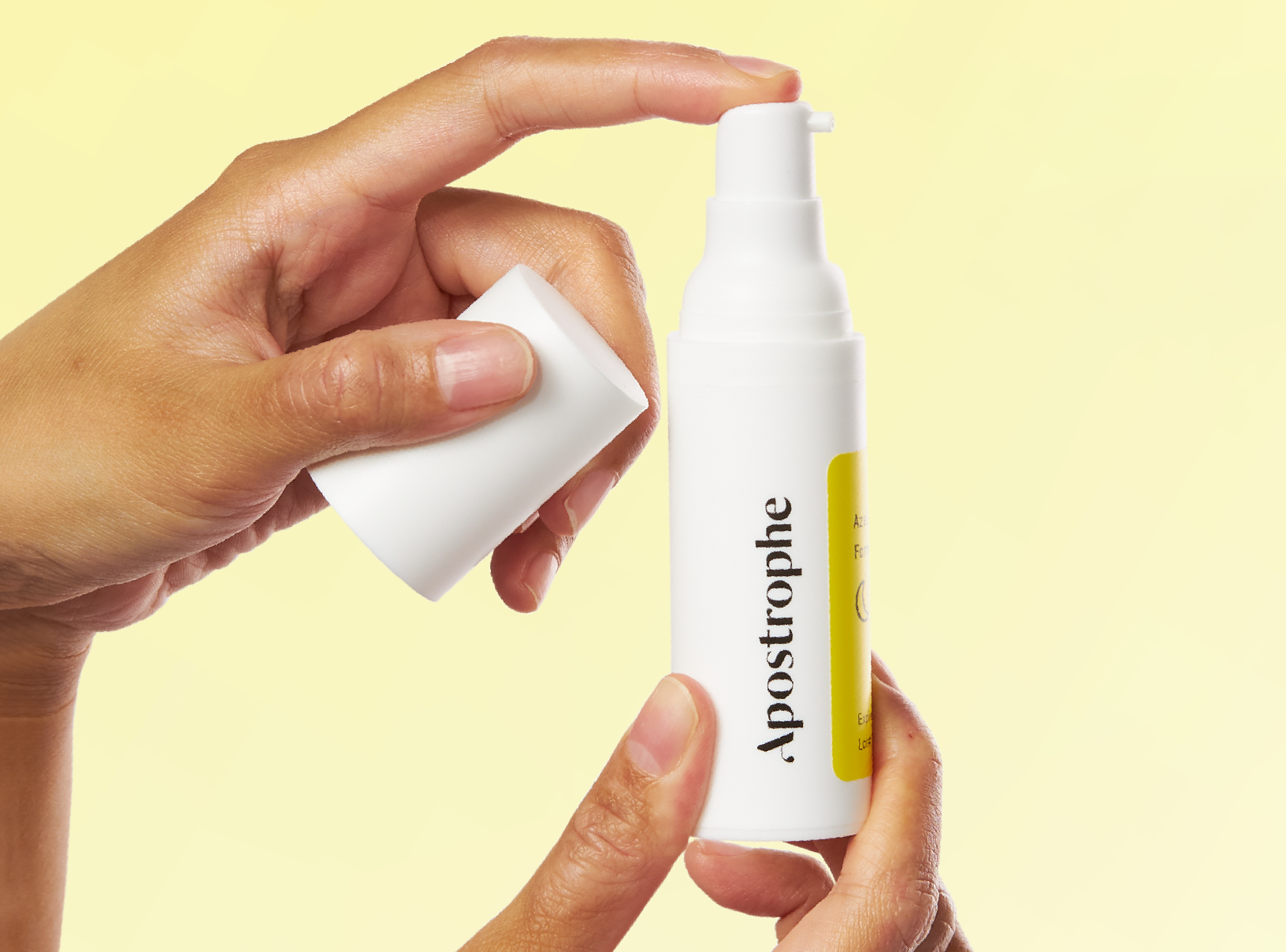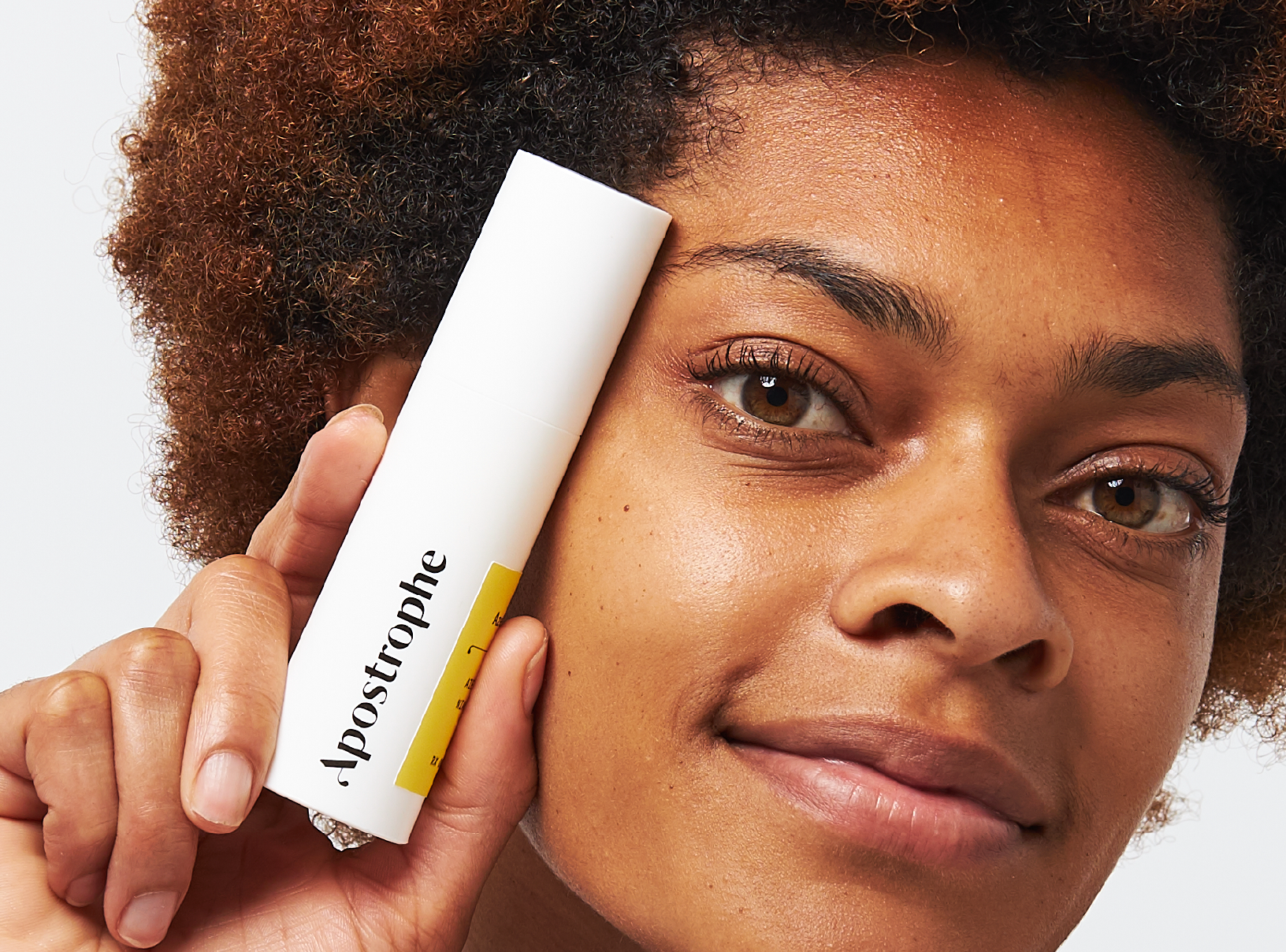Education
Wrinkles In Men: Causes and Treatment Options


SHARE
Education
Wrinkles In Men: Causes and Treatment Options
Medically reviewed by Vicky Davis, FNP
Written by Apostrophe Team
Last updated 10/5/2024
You didn’t think you were that old, but one morning you woke up and suddenly that “All these lines on my face gettin’ clearer…” Aerosmith lyric hit close to home. And if you’re old enough to know that was an Aerosmith lyric before we said so, you definitely should continue reading.
In this article, we’re exploring the causes of wrinkles in men, what types of wrinkles are the most common, and prevention and treatment options to keep your face youthful for as long as possible.
Causes of Wrinkles in Men
From spending too long in the sun to certain lifestyle factors, here are the main causes of wrinkles in men.
Sun Exposure
The skin is the largest organ in the body and is heavily influenced by factors in the environment. One of the biggest culprits of wrinkles in men is sun exposure.
UV light causes inflammation, immune changes, physical changes, and more. Wrinkling of the skin is one of the most overt signs of aging, and sun exposure can cause wrinkling over time. In fact, UV exposure may account for up to 80 percent of visible signs of aging in the skin, including dry appearance and wrinkling.
The mechanisms of wrinkling are likely complex, but research indicates that UV exposure may reduce the elastic properties of the skin, causing a sagging and wrinkled appearance.
If you’re concerned about wrinkles, the time to start wearing sunscreen is now. UV exposure is a gradual and cumulative factor that will most certainly give your skin an aged appearance over time.
Smoking
It has long been a well-known claim that smoking causes the skin to look older. But is there any science to back that claim? Well, yes.
Studies indicate that smoking is one important environmental factor in premature skin aging. In vitro studies indicate that tobacco smoke extract both impairs the production of collagen and increases the production of tropoelastin and matrix metalloproteinases (MMP).
MMP degrades matrix proteins and causes an abnormal production of thickened, furrowed skin cells—which causes a wrinkled appearance.
Increased MMP levels also lead to the degradation of collagen, elastic fibers, and connective tissue proteins. In studies conducted on hairless mice, tobacco smoke extract impacted dermal connective tissue.
If you’re a smoker, consider quitting to stay looking younger, longer. Not only will your skin thank you—the rest of your body will, too.
Hormones
As men age, testosterone levels naturally begin to diminish. A decrease in testosterone levels can lead to the appearance of aging skin.
With aging, a decrease in hormone levels at the skin level changes skin moisture, elasticity, and skin thickness. This can lead to a wrinkled, sagging appearance of the skin.
Here’s the good news—studies have demonstrated that hormone replacement therapy is able to improve the appearance of aging skin in men.
Weight fluctuations
As men age, they typically begin to lose the layer of facial fat that lies under the skin. This can lead to a more dramatic appearance of facial wrinkles. Additionally, gradual loss of skin elasticity leads to sagging.
Genetics
A wrinkled appearance is also partially due to genetics. If you’re curious about how your skin might look when you’re older, look no further than Mom and Dad. Unfortunately, you can’t change your genes, so this is one factor you’re stuck with.
Most Common Wrinkles in Men
According to a study conducted with 200 men and women aged 20 to 70, wrinkles manifested earlier in life and were more severe in men than in women. In this particular study, forehead lines were the first visible wrinkles in men.
Thankfully, there are many wrinkle treatment options to keep your skin looking youthful for as long as possible.
Wrinkle Treatments for Men
Wrinkle treatments can be split up into several categories. These include:
Cosmetological care
Daily skincare
A daily skincare routine may increase skin regeneration, elasticity, and smoothness, and thus temporarily change your skin’s condition. Using SPF in conjunction with topical treatments like retinoids and antioxidants protects the skin even further.
Non-invasive procedures
Aesthetic non-invasive procedures, such as regular facials, help to keep the skin looking clear and smooth—thereby helping your skin appear more youthful.
Topical treatments
Antioxidants
Antioxidants, such as vitamins, polyphenols, and flavonoids, reduce collagen degradation in the skin. They do this by scavenging the free radicals that contribute to skin aging, thereby reducing the concentration in the skin.
Cell regulators
Cell regulators, such as retinols, peptides, and growth factors improve collagen production in the skin. More collagen in the skin equals fewer wrinkles.
Invasive procedures
Chemical peels
Chemical peels work by resurfacing the top layer of skin. This helps to remove the damaged layer and replace the tissue with remodeled skin layers—and sometimes even spurs the formation of new collagen.
Visible light devices
Visible light devices, such as intense pulsed light (IPL), laser photo rejuvenation, and radiofrequency (RF) can provide a more youthful look to the skin with very little downtime.
Injectables
Injectables, or fillers, are products injected within or beneath the skin to improve its physical appearance. Fillers can be derived from fat, collagen, hyaluronic acid, or synthetic materials. Depending on which material you choose, the effects are temporary, semi-permanent (one to two years), or permanent (longer than two years).
Botox
Botox® (Botulinum toxin) helps to slow down the visible aging process by preventing dynamic wrinkles and correcting static, anatomical wrinkles. It works by paralyzing the muscles that cause wrinkles and is particularly effective for the “11s” (parallel wrinkles between the eyebrows), crow’s feet, and forehead lines.
Hormone Replacement Therapy (HRT)
HRT with testosterone is another option for older men who have a low testosterone level. Studies indicate that increased testosterone levels can lead to more moisturized skin, higher elasticity, and thicker skin.
Lifestyle habits
In addition to these treatment options, there are several healthy lifestyle habits you can adopt to aid in your quest for a wrinkle-free face. Here are several examples:
Quitting smoking
Low pollution exposure
Staying out of the sun
Maintaining low stress levels
Good nutrition
Physical activity
Control of your general health
Takeaways
From sun exposure, to smoking and hormones, there are several factors at play when it comes to wrinkles in men. Thankfully, there are many different forms of treatment and lifestyle habits you can try to keep you looking young for as long as possible. Talk to your healthcare provider to find out what options may be right for you.
9 Sources
Amaro-Ortiz, A., Yan, B., & DOrazio, J. (2014). Ultraviolet Radiation, Aging and the Skin: Prevention of Damage by Topical cAMP Manipulation. Molecules, 19(5), pp. 6202–6219. Retrieved from https://www.mdpi.com/1420-3049/19/5/6202/htm
Imokawa, G. (2009). Mechanism of UVB-Induced Wrinkling of the Skin: Paracrine Cytokine Linkage between Keratinocytes and Fibroblasts Leading to the Stimulation of Elastase. Journal of Investigative Dermatology Symposium Proceedings, 14(1), pp. 36–43. Retrieved from https://www.jidsponline.org/article/S1087-0024(15)30508-6/fulltext
Akazaki, S., & Imokawa, G. (2001). Mechanical methods for evaluating skin surface architecture in relation to wrinkling. Journal of Dermatological Science, 27, pp. 5–10. Retrieved from https://www.jdsjournal.com/article/S0923-1811(01)00115-3/fulltext
Akazaki, S., Nakagawa, H., Kazama, H., Osanai, O., Kawai, M., Takema, Y., & Imokawa, G. (2002). Age-related changes in skin wrinkles assessed by a novel three-dimensional morphometric analysis. British Journal of Dermatology, 147(4), pp. 689–695. Retrieved from https://onlinelibrary.wiley.com/doi/abs/10.1046/j.1365-2133.2002.04874.x
Scior, T., Bernard, & Do, Q. T. (2012). Modulating testosterone pathway: a new strategy to tackle male skin aging? Clinical Interventions in Aging, pp. 351. Retrieved from https://www.ncbi.nlm.nih.gov/pmc/articles/PMC3459575/
Makrantonaki, E., Bekou, V., & Zouboulis, C. C. (2012) Genetics and skin aging, Dermato-Endocrinology, 4:3, pp. 280-284. Retrieved from https://www.tandfonline.com/doi/full/10.4161/derm.22372
Luebberding, S., Krueger, N., & Kerscher, M. (2014). Quantification of Age-Related Facial Wrinkles in Men and Women Using a Three-Dimensional Fringe Projection Method and Validated Assessment Scales. Dermatologic Surgery, 40(1), pp. 22–32. Retrieved from https://pubmed.ncbi.nlm.nih.gov/24267416/
Scior, T., Bernard, & Do, Q. T. (2012). Modulating testosterone pathway: a new strategy to tackle male skin aging? Clinical Interventions in Aging, pp. 351. Retrieved from https://www.ncbi.nlm.nih.gov/pmc/articles/PMC3459575
Journal of Investigative Dermatology. (2009, August 01). Molecular Basis of Tobacco Smoke-Induced Premature Skin Aging. https://www.jidsponline.org/article/S1087-0024(15)30511-6/fulltext
Shop this post

Tretinoin
Like what you just read? Sign up for our email list to get the scoop on skincare science delivered straight to your inbox.

Deep Dives
A dermatologist shares his thoughts on the recent studies about benzoyl peroxide and benzene.
Read More
Education
What is milia?
What is milia? Today, we’re jumping into one type of bump that you may have heard about most commonly in infants — milia.
Read More
Education
Best moisturizer for acne-prone skin
If you have combination acne-prone skin, figuring out which moisturizer is best for your skin might be tough. In this guide, we break down the best moisturizer for combination, acne-prone skin.
Read More
